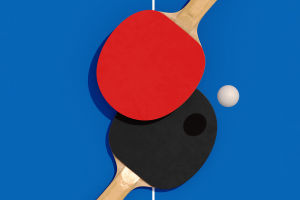Surfing is an extreme sport powered by ocean waves, where surfers use surfboards and leg ropes as equipment.
Through a process of waiting for waves, assessing them, paddling, catching them, and then standing up, surfers control the direction of their surfboard using their body weight, shoulders, and legs to unlock various technical maneuvers while riding waves.
People enjoy surfing at the beach, and those who haven't experienced the ocean firsthand can still feel the excitement of surfing through videos. But people often wonder: Why can humans ride waves and even move against them?
1. Why can humans stand on surfboards and float on the water's surface?
We all know the principle of how boats float on water. Most boats are made of wood, which has a low density and can easily float on the water's surface. The buoyant force acting on wood equals the combined weight of the person and the wood.
Surfboards are somewhat similar to boats. Although some people may perceive surfboards as small in videos and images, they typically have a length of around two meters, a width of about 60 centimeters, and a thickness of several centimeters. Surfboards are usually made of sturdy foam plastic, which provides enough buoyancy to support a person standing on them.
2. How do humans and surfboards gain speed on the water's surface?
Humans and surfboards can float on the water's surface. Initially, a person lies prone on the surfboard and paddles with their hands, moving to areas with faster water flow.
The surfboard is then propelled forward by the water flow, allowing the person to move with the waves, a process known as "catching waves." The aim of catching waves is to gain greater speed from larger waves.
Some affluent surfers may use helicopters to chase waves, saving time and effort. This method allows them to achieve even greater speeds.
Once a wave is caught, the person and the surfboard gain speed. By utilizing inertia, they can ride on smaller waves. Waves can be quite high, even several meters tall, containing a significant amount of gravitational potential energy. As the person descends from the wave, gravity acts on them, converting gravitational potential energy into kinetic energy. At this point, the person possesses considerable kinetic energy, which requires skillful board control.
During this process, the forces acting on the water are complex and require the person to adjust the force exerted by their feet on the surfboard according to changes in water flow. There is also a lot of uncertainty, as waves may suddenly rise or fall, challenging the surfer's ability to control the board.
3. How can humans ride waves in the opposite direction?
When a person descends from a wave that is several meters tall, they convert gravitational potential energy into kinetic energy. Despite having considerable kinetic energy, waves usually come in sets rather than as single entities.
While images often focus on surfers riding a wave, it's common to see them riding against the next high wave. In reality, they've just descended from one wave and are now riding up another.
Therefore, the ability to ride waves in the opposite direction during surfing is due to the person's inherent kinetic energy, which allows them to ride up the second wave after descending from the first one.
Surfing culture has a long history, originating from the Polynesian people of the Hawaiian Islands. Back then, only tribal chiefs were allowed to use the best surfboards crafted from the finest trees, and these chiefs were often the most skilled wave riders in the tribe.
The first recorded European observation of surfing was in 1767 by crew members of the Dolphin in Tahiti. Lieutenant James King documented the art of surfing in his log in 1779 during the death of Captain Cook.
Surfing was born in Hawaii and flourished in Australia. It was only in 1912, under the advocacy of Hawaiian-American Olympic swimming champion Duke Kahanamoku, that surfing gained popularity in California, USA. Since then, it has remained popular in Hawaii, North America, Peru, and Australia.
Today, modern surfing continues to thrive and evolve worldwide.

